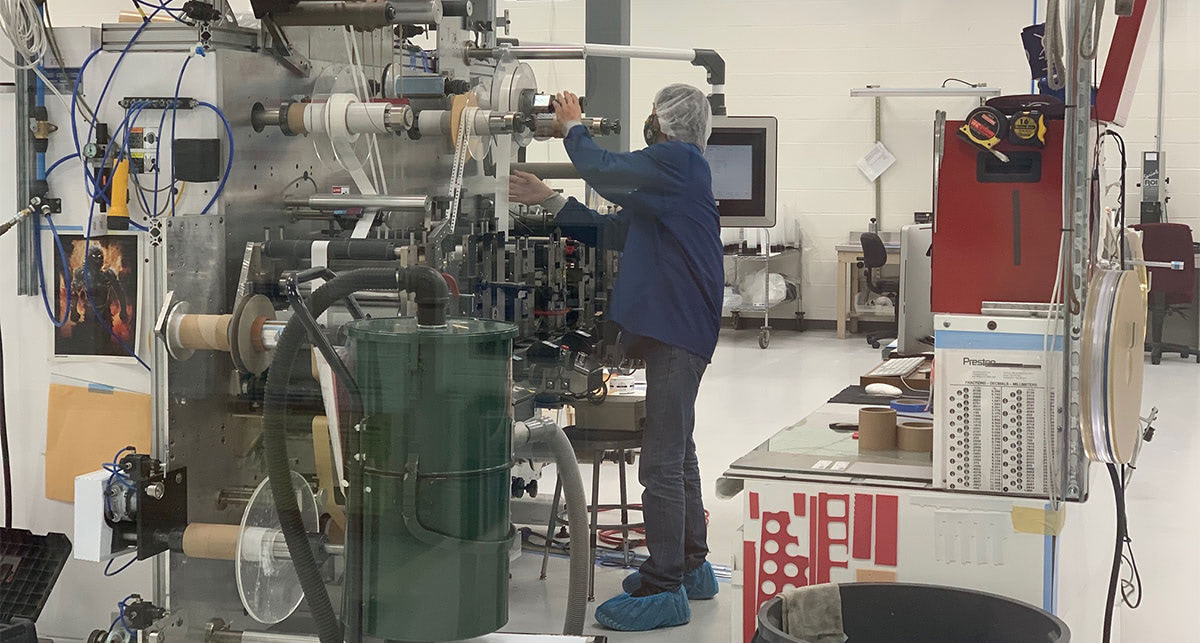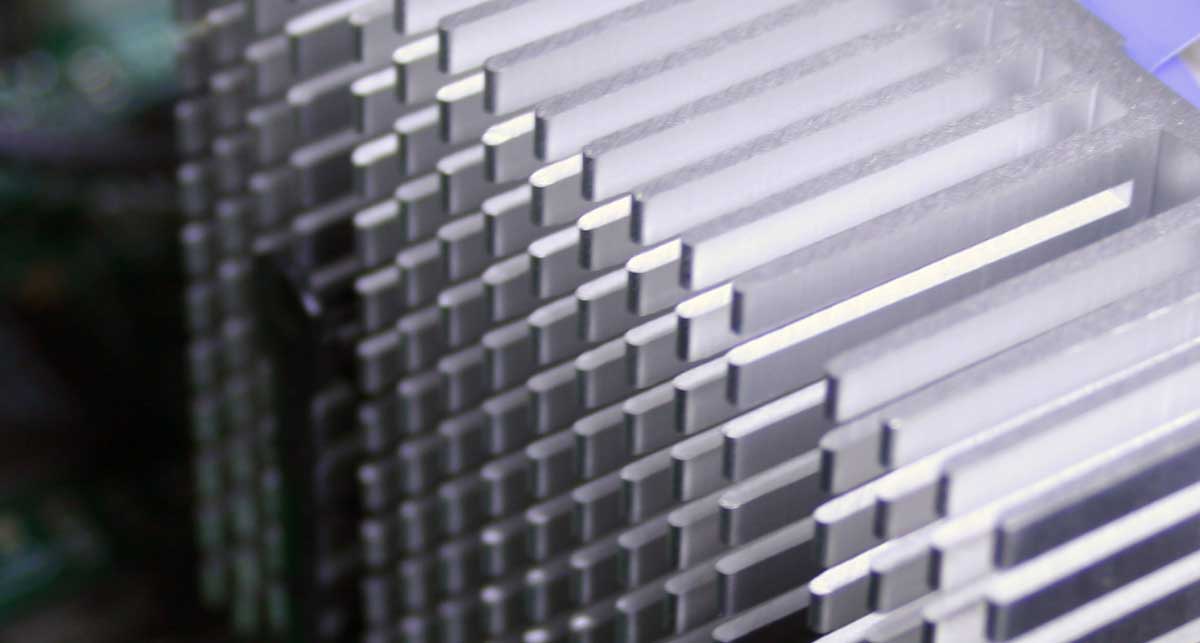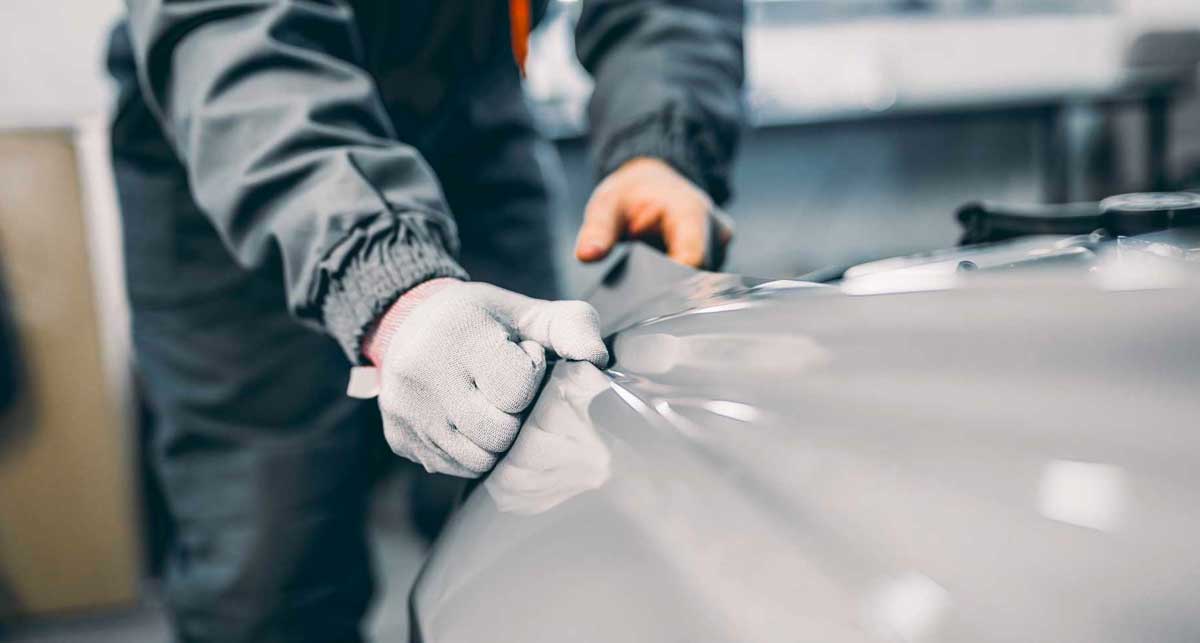If your doctor pulled out a roll of tape that oozed black sludge, you might ask yourself: Is this really FDA-approved?
Similarly, when you’re the one designing a stick-to-skin application, you’ll want to guarantee that your chosen adhesive won’t harm the skin upon application.
Over the past 38 years, Strouse has used hundreds of skin-safe double-sided tapes to make custom bandages, patches, cosmetic strips, and more. We also build accurate samples to help you decide which materials match your application needs. Yet, before you get too involved in prototyping, you’ll have to figure out which qualifications your skin adhesive needs.
This article will cover the technical requirements for skin-safe adhesives and how to pick the right one for the intended wear duration.
Essential Considerations When Choosing Stick to Skin Adhesives
There are four primary components to skin adhesive safety.
1. BONDING STRENGTH
Regarding skin adhesive solutions, bonding strength often refers to the user’s ability to safely apply and remove a product.
With a proper application, a skin-safe pressure-sensitive adhesive should not tear the skin, causing MARSI (Medical Adhesive-Related Skin Injuries) upon removal. Certain demographics/conditions, such as age and diabetes, make patients far more susceptible to skin tear injuries due to the loss of skin cells.
2. BREATHABILITY
Material breathability and moisture handling are essential qualities to consider in a skin adhesive, as they may otherwise cause excessive dryness or excessive hydration.
3. CHEMICAL COMPOSITION
An adhesive's chemical composition must be biocompatible to be deemed “skin-safe.” Later in this article, we’ll discuss the standards for skin biocompatibility.
4. DEVICE WEIGHT
Another crucial factor to be considered is the shear strength of your application.
Adhesives are designed to adhere to a patient for a specific amount of time, but that assumes minimal stressors. For example, imagine that your skin tape is holding a device, tubing, or bandages. This additional weight will affect how your adhesive performs for whatever duration you've prescribed. Sometimes a 7 to 10 day adhesive will only last 5 days with the additional weight of a medical device.
Which Adhesives Are Safe for Human Skin?
Many adhesives are considered skin-safe, but generally speaking, as a converter, our go-to choices for skin adhesives are:
- Acrylic adhesive: commonly used in skin bonding applications that support weight, like wearable medical devices and tubes.
- Silicone adhesive: often paired with acrylic in double-sided materials, silicone adhesive is generally better for gentler skin bonding or repositionable applications.
- Natural rubber adhesive: strong bonding; can’t be used in hospitals due to latex.
- Synthetic rubber adhesive: durable, UV-resistant, and withstands high-temperature sterilization methods.
Matching the adhesive depends on the application; however, the following adhesives might help you if you want to check out specific stick-to-skin products: The 7 Best Stick to Skin Tapes.
If you’re interested in testing skin-safe adhesives for your product design, Strouse can help you build an accurate prototype. Our laser cutting and digital knife capabilities are well-suited for building small, accurate quantities of sample parts.
Lastly, regarding chemical composition, certain applications may require biocompatibility standards (listed below) to ensure they have been tested for skin safety.
What Requirements Do Skin Adhesive Products Have to Follow?
Although it varies from country to country, U.S. non-medical skin adhesive products (such as cosmetics) often do not require FDA premarket approval. On the other hand, medical-grade products must comply with testing requirements.
BIOCOMPATIBILITY STANDARDS
To receive market approval, skin adhesives for medical applications must be evaluated for biocompatibility standards. The strictness of the standards varies based on the product’s health risk.
Many skin-safe over-the-counter products will have a “skin-safe” or “hypoallergenic” label to indicate that they will cause minimal allergic reactions and irritation. Those that have passed more rigorous testing may receive a “medical grade” safety label.
ADHESIVE STANDARDS FOR MEDICAL DEVICE MANUFACTURERS
- ISO 10993-10 — tests whether the adhesive causes sensitization, irritation, or allergic reactions in medical devices.
- ISO 10993-5 (cytotoxicity) — specifies medical device cytotoxicity testing to see whether the adhesive harms mammalian cells
- Class II (special controls) — medical device standards regulate adhesives used in topical skin applications, such as superficial wounds and surgical incisions.
- USP class VI (the strictest USP classification) — in vivo testing (within a living organism), systemic injection, intracutaneous injection, and implantation.
ISO Manufacturing Requirements
Suppose your product is intended for hospital use and/or wound care. In that case, you will need a manufacturing partner with Clean Room capabilities to protect it from foreign particles and changes in humidity/temperature. Depending on your application, you may require additional manufacturer qualifications, such as ISO 13485:2016 for medical devices.
Strouse uses an ISO 7 clean room for medical tapes and many other skin-applicable products to reduce biological waste and meet industry standards. We are registered to ISO 13485:2016 and ISO 9001:2015.
Finding an Adhesive For the Intended Wear Duration
Your application’s wear duration is vital in deciding what material you will use.
Short-term skin applications might use repositionable skin adhesives, whereas long-term applications may require additional material considerations, such as water resistance. Medical devices and other skin attachment bonding solutions require a skin-safe double-sided adhesive that’s strong enough to hold for as long as needed without causing damage.
The one surefire way of knowing whether an adhesive suits your application is to test it in the context of your design.
Reach out today to discuss your design and begin the product development & prototyping stage with Strouse. Our experts will help guide you through material selection until you’re ready to move to full-scale production.
If you’re still searching for the right material or process, you can learn more about skin adhesives in our Learning Center.







